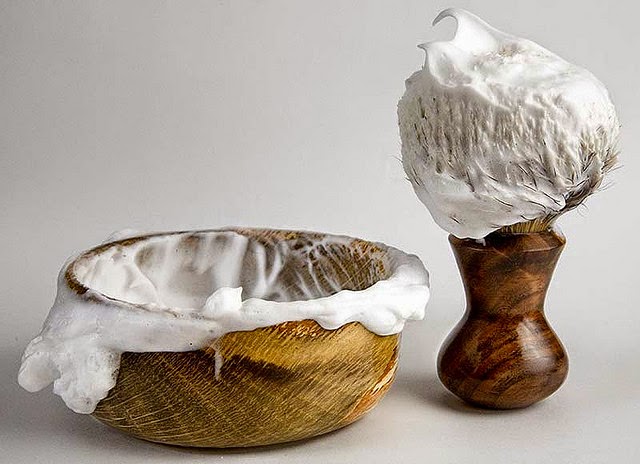Hard to describe, but a little thinner than the gorgeous lather photos you often see. When I first started here about ten years ago, I wanted lather that looked like the stiff peak stage, when making whipped egg whites or whipped cream. The little peak on top of the brush? It would stand up proud! Like this:

Now, for most soaps, I would face lather to that point and then give it one or two more dips of just the brush tips in water and keep going. I credit the SR crowd for nudging me this way. Now a great lather for me looks more like this. It's still not what I'd call anywhere near 'runny', but it is softer, the peaks won't stand quite as stiffly, they droop a little bit. None of this is very scientifically described, I know, but it's the best I can do. It's softer, has a little more sheen to it, and the extra water does add slickness, IMO.
View attachment 1343312
Here's another one with Cella. I used to make it like the photo at the top, but now I make it softer, more of a sheen. I don't want runny at all, but softer is better, I've found, as I've gotten more experienced at this. This particular topic is so very YMMV though.
View attachment 1343314
I like the first one.


 Well, there is that YMMV thing! Some people do! I used to!
Well, there is that YMMV thing! Some people do! I used to!